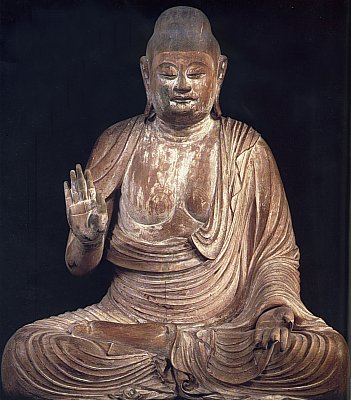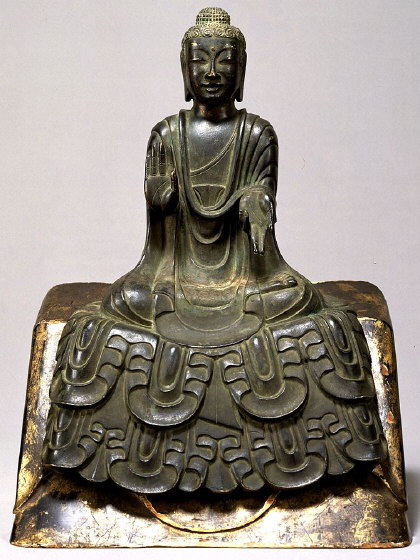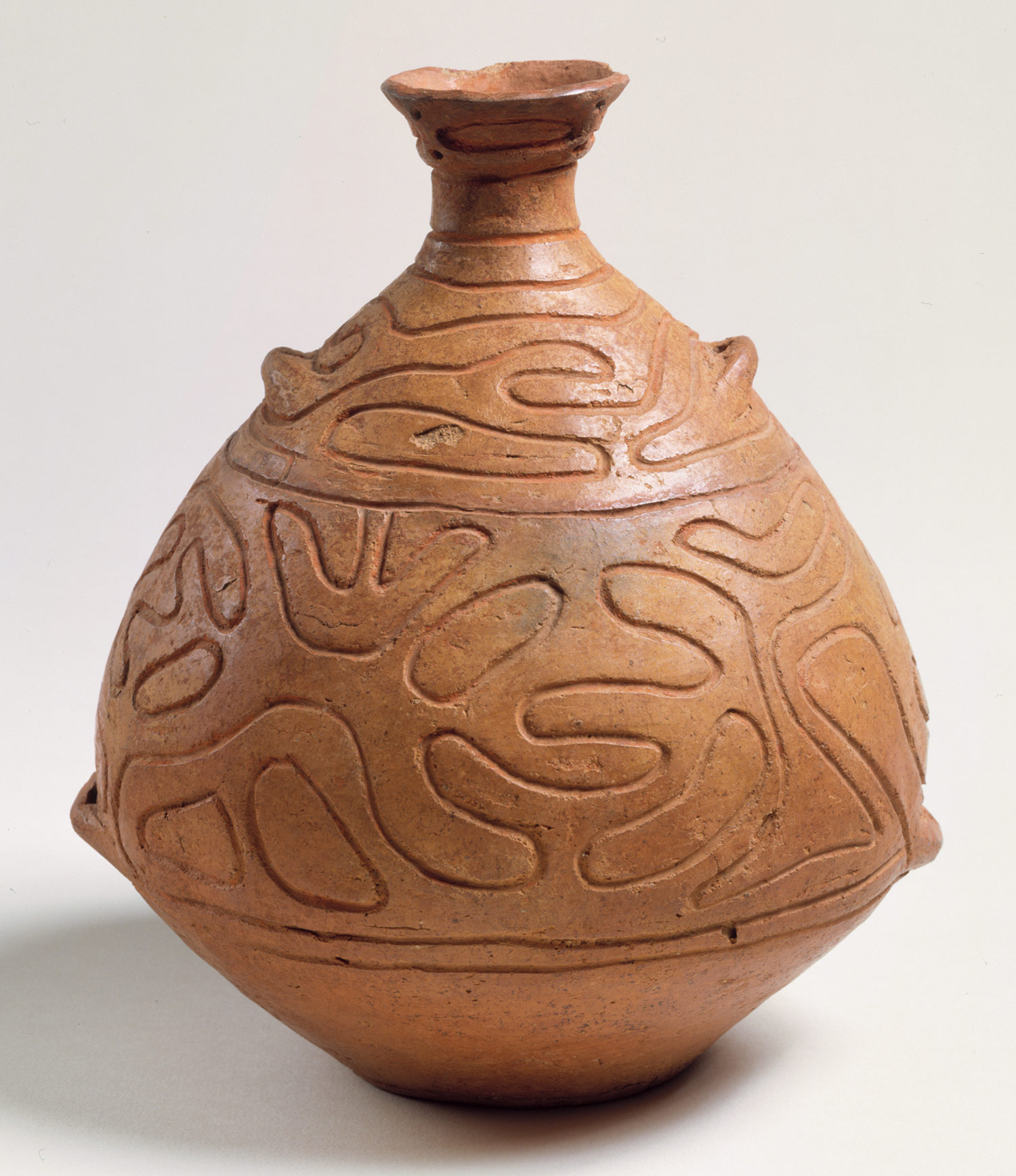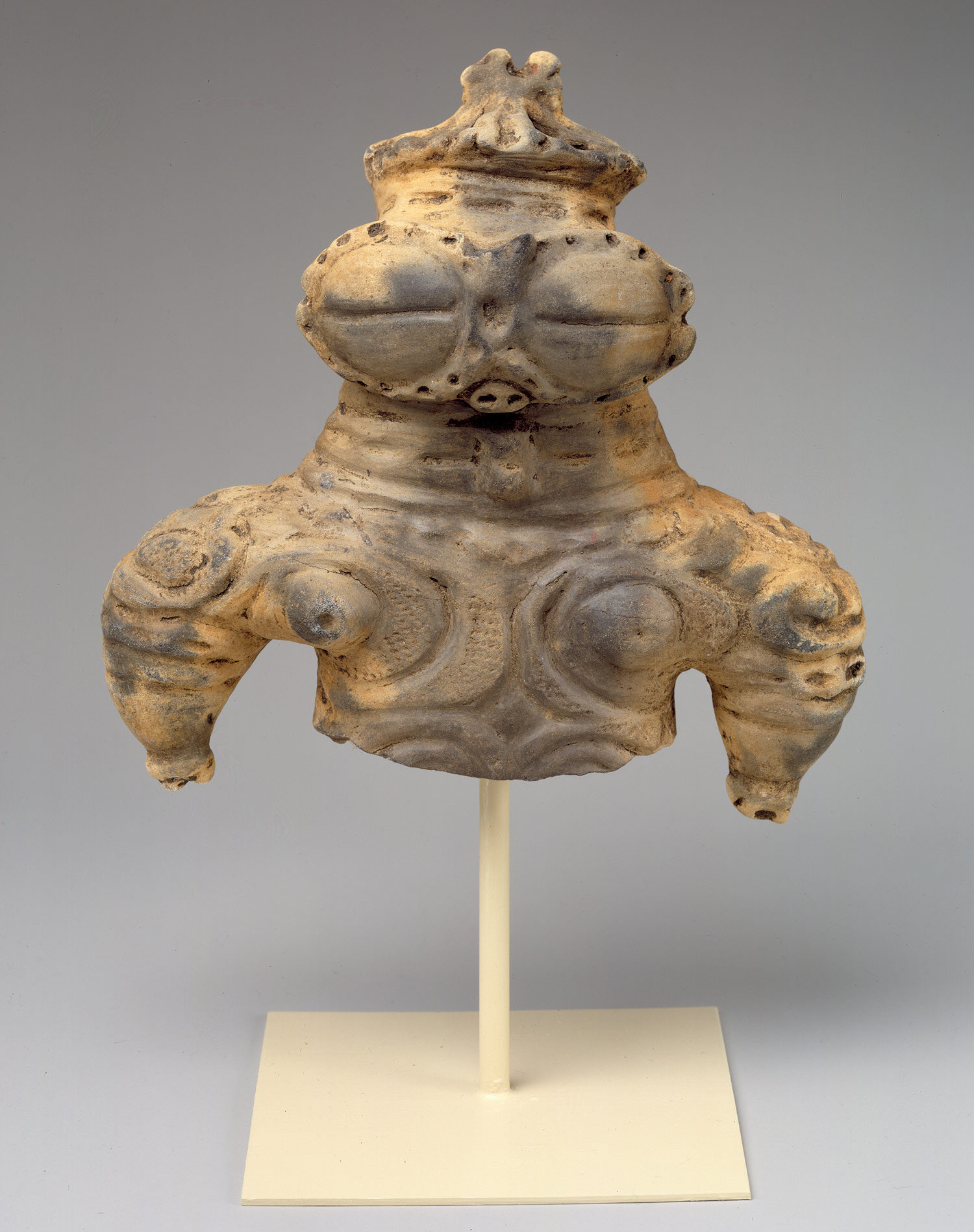The Heian Period continued....
The Heian Period was an intermediate stage in the development of Japanese drapery for Buddhist statuary. During this period came Honpashiki Emon (rolling wave) and Renpashiki Emon (rippling wave). Both aimed to achieve a water-like pattern of regularity by alternating between deep and shallow folds that flowed down the garment in evenly spaced regular patterns, like waves breaking on the beach.

Example: Hopna Shiki Emon Drapery
Sitting Shaka Nyorai
Early Heian Period, Muroji Temple

Gaki Zoshi (Scroll of the Hungry Ghosts)
Heian Period - 12th century
In the last century of the Heian Period, the horizontal, illustrated narrative handscroll, known as e-maki ("picture scroll") came to the fore. E-maki combines both text and pictures, and is drawn, painted, or stamped on handscroll. They depict battles, romance, religion, folk tales, and stories of the supernatural world. Though beginning under Chinese influence, e-maki truly developed into a vital and dynamic art form in the hands of the Japanese.














